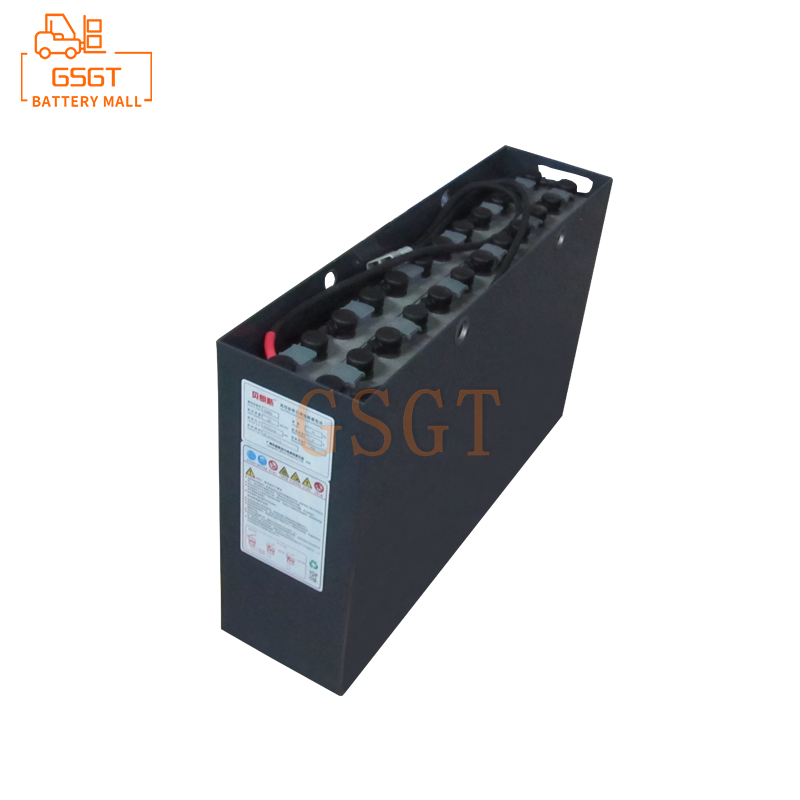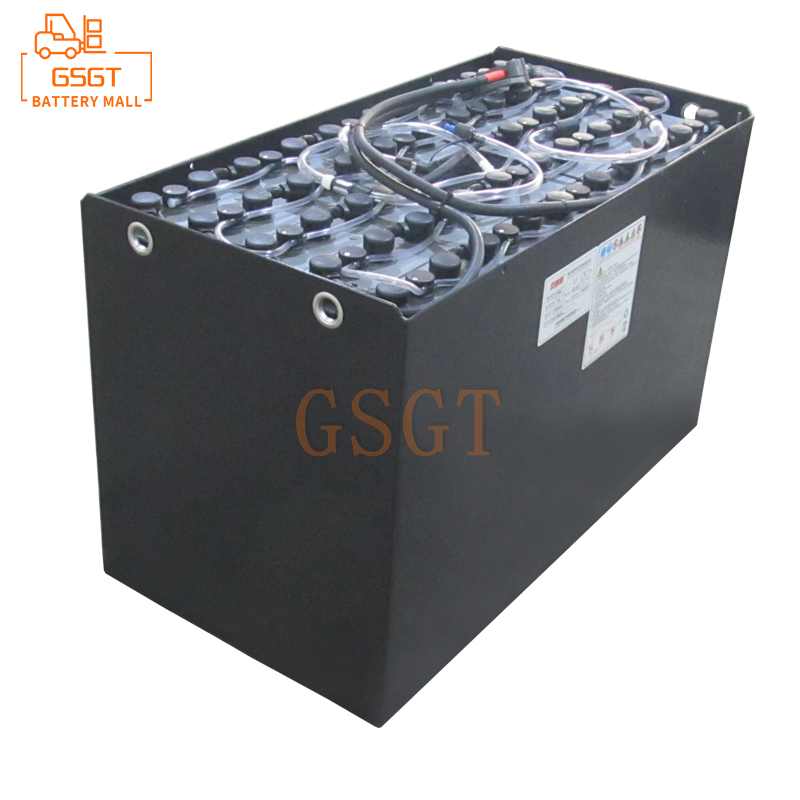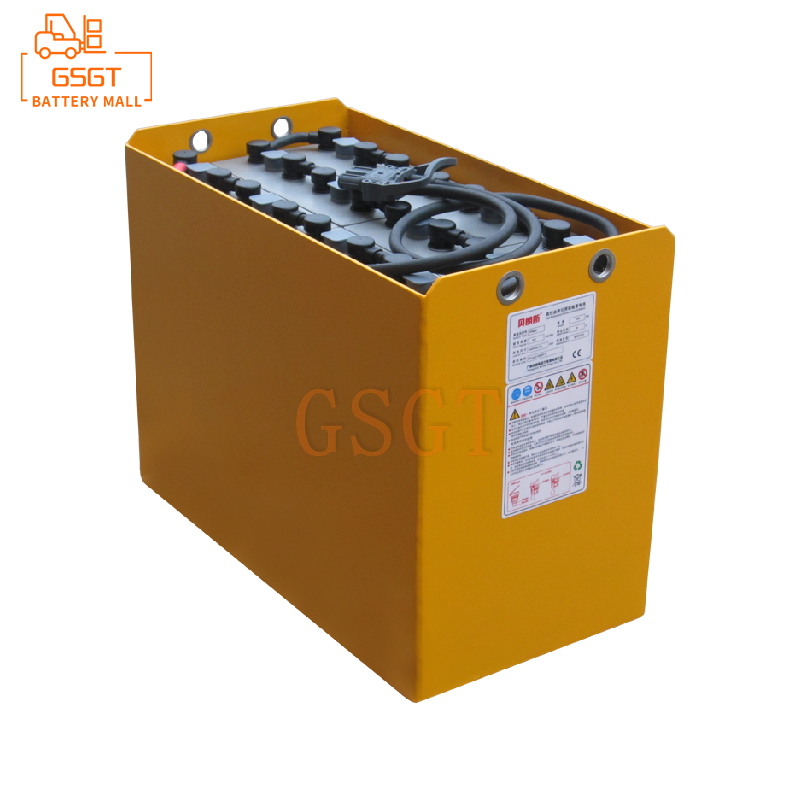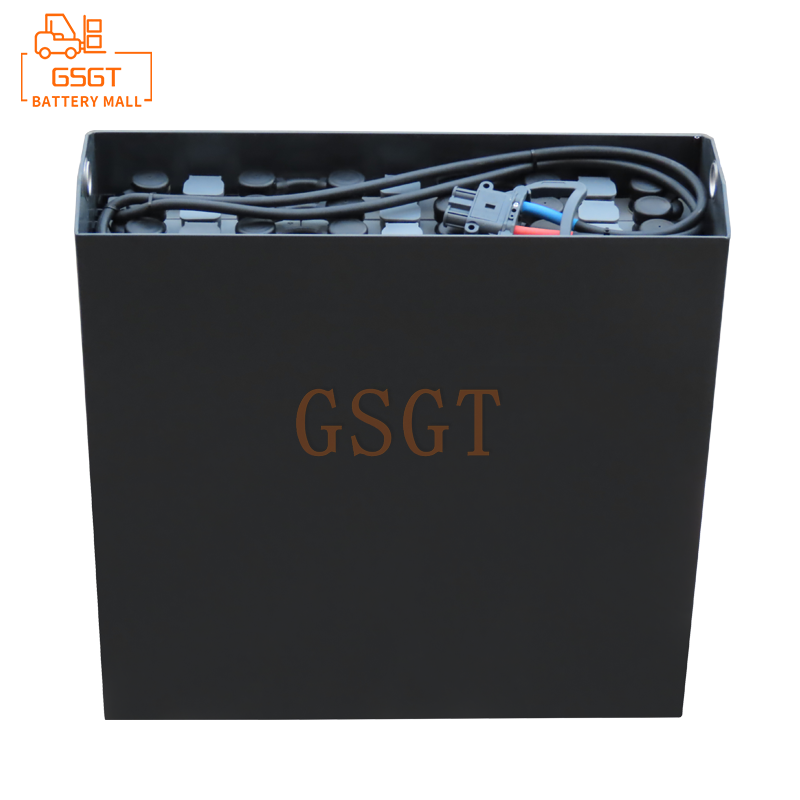Time:2025-06-17 10:14:35
Browse:598
In modern logistics and warehousing operations, forklifts have become indispensable equipment due to their efficient cargo handling capabilities. The power source of forklifts - lead-acid batteries, their performance and stability directly determine the working efficiency and service life of forklifts. However, during long-term and high-frequency use, lead-acid batteries are bound to encounter various faults. This article will systematically sort out the common fault types of lead-acid batteries in forklifts, deeply analyze the causes of faults, and provide comprehensive and scientific solutions, offering practical references for forklift operators and maintenance personnel.
1. Basic Working Principle and Structure of Lead-Acid Batteries
Before discussing the handling of faults, it is necessary to first understand the basic working principle and structure of lead-acid batteries. Lead-acid batteries are mainly composed of positive and negative plates, separators, electrolyte, casings and other parts. Its working principle is based on REDOX reactions: During charging, electrical energy is converted into chemical energy. The lead sulfate on the positive plate is oxidized to lead dioxide, and the lead sulfate on the negative plate is reduced to spongy lead, increasing the concentration of sulfuric acid in the electrolyte. During discharge, chemical energy is converted into electrical energy. The active substances on the positive and negative plates react with sulfuric acid in the electrolyte to form lead sulfate, simultaneously releasing electrical energy.
2. Common Fault Types and Handling Methods
(1) Battery capacity decline
1. ** Fault Phenomenon ** : After the forklift is fully charged, its working time is significantly shortened and cannot reach the normal operating duration. The battery voltage drops at an accelerated rate, and a prompt indicating low battery power appears within a short period of time.
2. **Possible causes**
- ** Plate sulfation ** : Long-term insufficient charging, too low electrolyte level or excessive discharge during use causes a layer of white and hard lead sulfate crystals to form on the surface of the plates, blocking the pores of the plates and hindering the penetration of the electrolyte, thereby reducing the charging and discharging performance of the battery.
- ** Abnormal electrolyte density ** : If the concentration of sulfuric acid in the electrolyte is too high or too low, it will affect the chemical reactions of the battery, resulting in a decrease in capacity. For instance, if the density of the electrolyte is too high, it will accelerate the corrosion of the plates; if it is too low, it will reduce the battery's discharge capacity.
- ** Plate Active Material shedding ** : Frequent high-current charging and discharging, vibration or excessive battery life will cause the active material on the plates to gradually shed, reducing the effective area involved in chemical reactions and thereby lowering the battery capacity.
3. ** Treatment Method **
- ** For plate vulcanization ** : The devulcanization treatment is carried out by using a method of long-term charging with a small current, that is, charging with a current 1/3-1/2 lower than the normal charging current for 10-20 hours, allowing the lead sulfate crystals to gradually dissolve. If the vulcanization is severe, specialized vulcanization removal equipment or the addition of vulcanization agents can be used for treatment.
- ** For abnormal electrolyte density ** : Use a hydrometer to measure the electrolyte density. If the density is too high, distilled water can be added for dilution. If the density is too low, dilute sulfuric acid should be added for adjustment. After adjustment, the density needs to be measured again to ensure it is within the specified range.
- ** If the active material on the plates is found to have fallen off ** : For minor peeling cases, the detached substances inside the battery can be cleaned thoroughly before continuing to use it. If the detachment is severe, the plates or the entire battery pack need to be replaced.
(2) The battery cannot be charged
1. ** Fault Phenomenon ** : After connecting the forklift battery to the charger, the indicator light of the charger does not light up or displays abnormally, and the battery voltage does not rise significantly; During the charging process, the charger makes abnormal noises or gets extremely hot.
2. **Possible causes**
- ** Charger failure ** : The internal circuit components of the charger are damaged, such as a blown fuse, a damaged rectifier diode, or a faulty charging control chip, resulting in the inability to output charging current normally.
- ** Battery connection line issues ** : Loose, open or short-circuited connection lines between the battery and the charger, as well as oxidation and corrosion of the battery terminals, can all affect the transmission of charging current.
- ** Internal battery open circuit ** : The connection strips of the plates break, the connection parts between the terminals and the plates become loose or burn out, preventing the internal circuit of the battery from forming a closed loop and thus unable to accept charging.
3. ** Treatment Method **
- ** Check the charger ** : Use a multimeter to measure the output voltage and current of the charger to determine if they are normal. If the charger malfunctions, it needs to be replaced or repaired according to the specific damaged components. For those who lack the ability to repair, it is recommended to contact a professional charger repair manufacturer for handling.
- ** Check the connection lines ** : Carefully inspect the connection lines between the battery and the charger to ensure they are securely connected without any looseness, open circuits or short circuits. For oxidized or corroded terminals, sandpaper or special tools can be used for grinding and cleaning, and then conductive paste can be applied to enhance the electrical conductivity.
- ** Detection of Internal Open circuit in Battery ** : Use a voltmeter to measure the voltage of each cell of the battery one by one. If the voltage of a certain cell is zero or significantly lower than that of other cells, there may be an internal open circuit in that cell. For batteries with internal open circuits, if they cannot be repaired, they should be replaced in a timely manner.
(3) Battery leakage
1. ** Fault Phenomenon ** : Electrolyte seeps out from the surface of the battery casing, and there is a pungent smell of sulfuric acid around the battery; The liquid level of the battery electrolyte keeps dropping and it needs to be replenished frequently.
2. **Possible causes**
- ** Battery casing rupture ** : During the operation of the forklift, if it is subjected to collision, compression or vibration, cracks or damage may occur in the battery casing, causing the electrolyte to leak.
- ** Aging or damage of sealant ** : The sealant between the battery cover and the casing will age and harden after long-term use, losing its sealing performance, or if the sealant is not applied evenly during installation, the electrolyte may seep out from the gaps.
- ** Poor sealing of the terminal post ** : The sealing structure between the terminal post and the battery cover is damaged, such as aging, deformation or improper installation of the sealing gasket, causing the electrolyte to seep out along the terminal post.
3. ** Treatment Method **
- ** For cracked battery casings ** : If the cracks are small, special battery repair glue can be used for repair. Before making the repair, the surface of the battery casing should be cleaned thoroughly. Then, apply repair glue to the cracks and wait for it to cure. If the crack is large or the casing is severely damaged, a new battery casing needs to be replaced.
- ** For aging or damage of sealant ** : Remove the old sealant, reapply qualified sealant, and ensure even application without air bubbles. After applying the sealant, it is necessary to wait for a certain period of time to allow it to fully cure before assembly.
- ** If the terminal post seal is poor ** : Replace the aged or deformed sealing gasket and install the terminal post correctly. When installing, be sure to tighten the nuts to ensure a good seal and prevent the leakage of the electrolyte.
(4) Abnormal battery heating
1. ** Fault Phenomenon ** : During the charging or discharging process, the surface temperature of the battery rises significantly and feels hot to the touch. When the battery overheats severely, phenomena such as smoke and unpleasant odors may occur.
2. **Possible causes**
- ** Excessive charging current ** : The charging current set by the charger exceeds the rated charging current of the battery, causing overly intense chemical reactions inside the battery and generating excessive heat.
- ** Internal short circuit of the battery ** : The separator between the plates is damaged, causing the positive and negative plates to come into direct contact, resulting in a short circuit; Or a large amount of active substances on the plates may fall off and accumulate at the bottom of the battery, causing a short circuit between the positive and negative plates. The short-circuit current will cause the battery to heat up rapidly.
- ** Poor heat dissipation ** : The battery installation location has poor ventilation, the surrounding ambient temperature is too high, or the battery surface is covered with debris, which affects the battery's heat dissipation and causes the heat to not be dissipated in time.
3. ** Treatment Method **
- ** Check the charging current ** : Check the setting parameters of the charger to ensure that the charging current meets the rated requirements of the battery. If the charging current is too large, you can adjust the output current of the charger or replace it with a suitable one.
- ** Detection of Internal short circuits in batteries ** : Use a multimeter to measure the resistance values of each cell of the battery. If the resistance value of a certain cell is significantly lower than that of the others, there may be a short circuit in that cell. For batteries with internal short circuits, it is generally necessary to replace them with new battery packs.
- ** Improve heat dissipation conditions ** : Clean the debris on the battery surface and ensure good ventilation around the battery. When used in high-temperature environments, appropriate cooling measures can be taken, such as installing cooling fans or reducing the usage frequency of the forklift to prevent the battery from working continuously for a long time.
3. Daily Maintenance and Preventive Measures
To reduce the occurrence of lead-acid battery faults in forklifts and extend their service life, it is crucial to do a good job in daily maintenance and prevention.
1. ** Regularly check the electrolyte level ** : Check the electrolyte level at least once a week to ensure it is 10-15mm above the plates. If the liquid level is too low, distilled water or special lead-acid battery replenishment liquid should be added. Do not add tap water to prevent impurities in the water from affecting the battery performance.
2. ** Correct charging ** : Charge the battery strictly in accordance with the user manual to avoid overcharging or undercharging. After each discharge, the battery should be charged in time to avoid deep discharge as much as possible. During the charging process, pay attention to observing the working status of the charger and the temperature changes of the battery. Deal with any abnormalities in a timely manner.
3. ** Keep the battery clean ** : Regularly wipe the surface of the battery casing with a damp cloth to remove dust, electrolyte residues, etc., to prevent leakage on the battery surface. At the same time, check whether the battery terminals are oxidized or corroded. If necessary, clean and maintain them in a timely manner.
4. ** Avoid Severe vibration and collision ** : During the operation of the forklift, try to avoid sudden braking, sharp turns and other severe operations to reduce the vibration and collision that the battery is subjected to. In addition, when handling the battery, handle it with care to prevent damage to the battery casing.
5. ** Regular charge and discharge maintenance ** : Perform a complete charge and discharge once a month, that is, first fully discharge the battery and then fully charge it. This can activate the active substances on the plates, improve the battery's charging and discharging performance, and extend the battery's service life.
4. Conclusion
The fault handling and maintenance of lead-acid batteries in forklifts is a highly specialized task, which requires operators and maintenance personnel to possess certain professional knowledge and skills. By understanding the working principle of batteries, common types of faults and their handling methods, and doing a good job in daily maintenance and prevention, the incidence of battery faults can be effectively reduced, the working efficiency of forklifts can be improved, maintenance costs can be reduced, and reliable power support can be provided for the logistics operations of enterprises. In actual work, if complex fault problems are encountered, it is recommended to contact professional battery maintenance personnel or technical support from the manufacturer in a timely manner to ensure that the faults are accurately and effectively resolved.

$1060

$3050

$1690

$1200

MESSAGE
Professional And Efficient
Security
Affordable Price
Professional Services